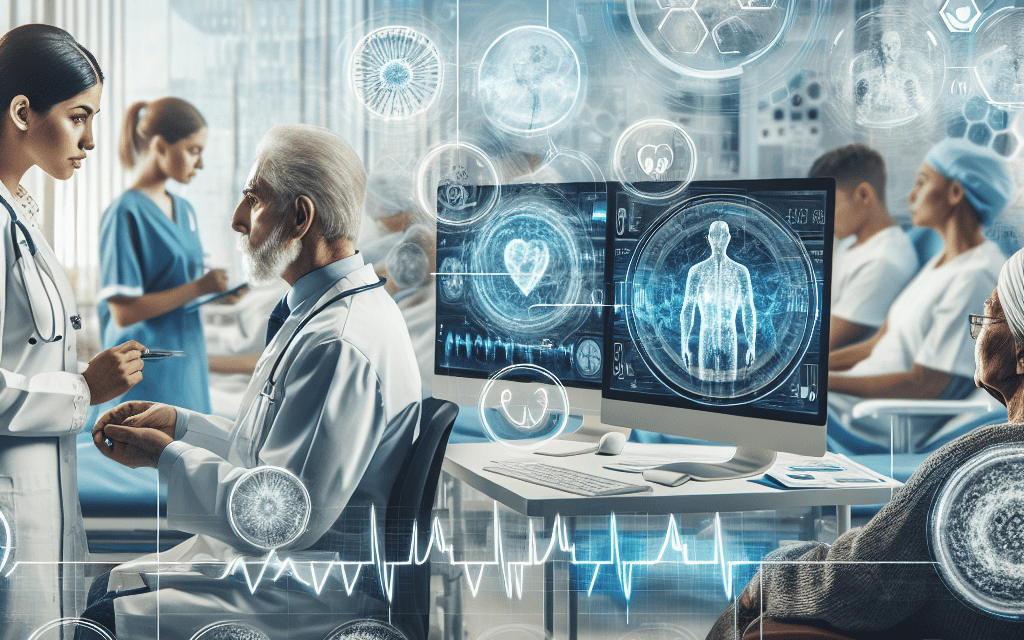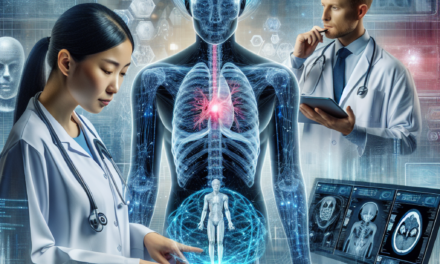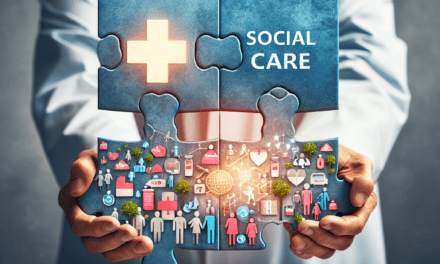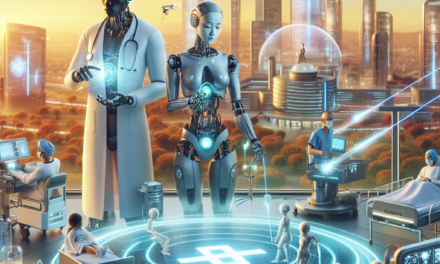-
Table of Contents
- Elderly Care: Innovations and Challenges in Geriatric Medicine
- 1. Technological Innovations in Geriatric Care
- 1.1 Telemedicine and Remote Monitoring
- 1.2 Artificial Intelligence and Machine Learning
- 1.3 Robotics in Elderly Care
- 1.4 Smart Home Technologies
- 1.5 Virtual Reality and Cognitive Training
- 2. Challenges in Geriatric Medicine
- 2.1 Workforce Shortages
- 2.2 Complex Health Needs
- 2.3 Access to Care
- 2.4 Social Isolation and Mental Health
Elderly Care: Innovations and Challenges in Geriatric Medicine
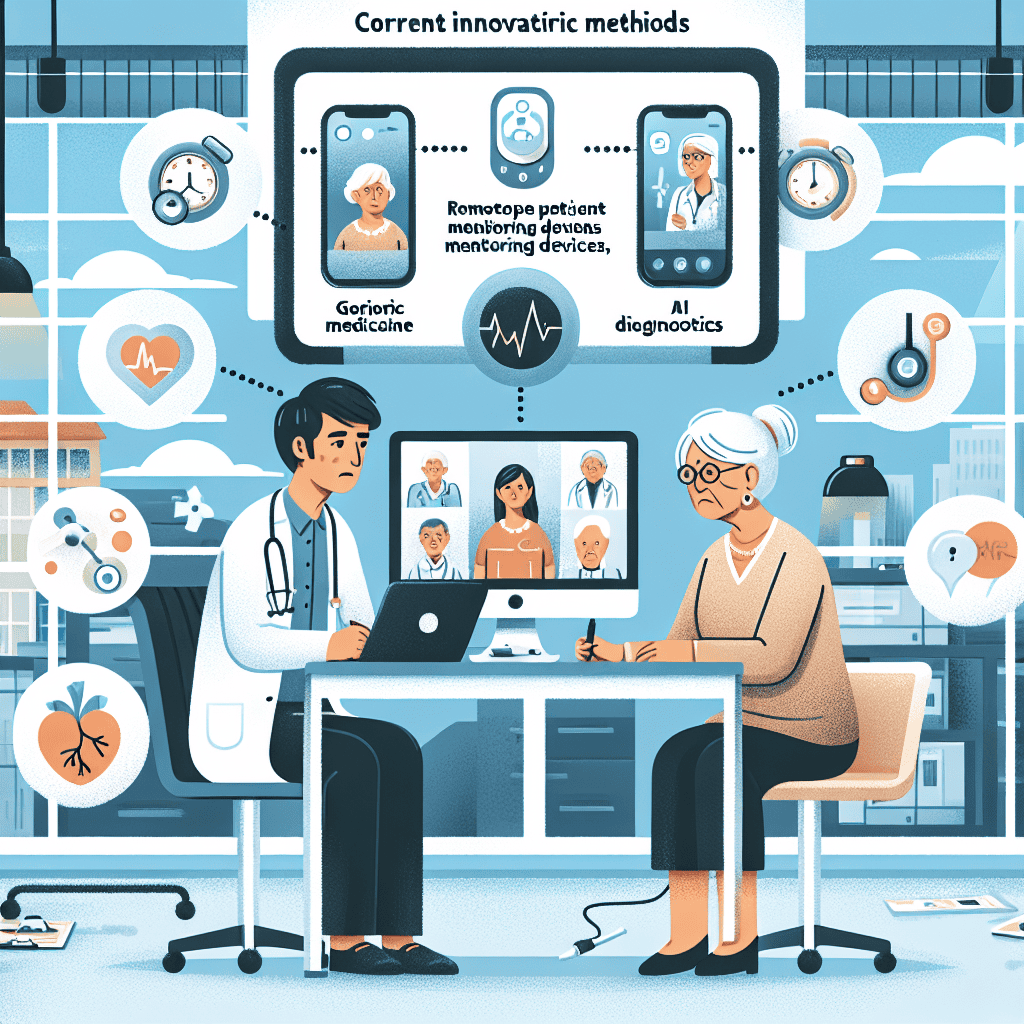
The global population is aging at an unprecedented rate, leading to a significant increase in the demand for geriatric care. As the number of elderly individuals rises, so does the need for innovative solutions and strategies to address the unique challenges faced by this demographic. Geriatric medicine, a specialized field focusing on the health care of older adults, is at the forefront of these efforts. This article explores the latest innovations and challenges in elderly care, providing a comprehensive overview of the current landscape in geriatric medicine.
1. Technological Innovations in Geriatric Care
Technology has become an integral part of modern healthcare, and its impact on geriatric medicine is profound. From telemedicine to wearable devices, technological advancements are transforming how care is delivered to the elderly.
1.1 Telemedicine and Remote Monitoring
Telemedicine has emerged as a vital tool in providing healthcare to the elderly, especially in rural or underserved areas. It allows healthcare providers to offer consultations, monitor chronic conditions, and manage medications remotely.
One of the primary benefits of telemedicine is its ability to reduce the need for in-person visits, which can be challenging for elderly patients with mobility issues. A study published in the Journal of the American Geriatrics Society found that telemedicine consultations led to a 38% reduction in hospital admissions among elderly patients.
Remote monitoring devices, such as wearable sensors and home-based health monitoring systems, further enhance telemedicine’s effectiveness. These devices can track vital signs, detect falls, and alert caregivers or medical professionals in case of emergencies.
- Wearable devices that monitor heart rate, blood pressure, and activity levels.
- Home-based systems that track medication adherence and detect falls.
- Smartphone apps that facilitate communication between patients and healthcare providers.
1.2 Artificial Intelligence and Machine Learning
Artificial intelligence (AI) and machine learning are revolutionizing geriatric care by enabling more accurate diagnoses and personalized treatment plans. AI algorithms can analyze vast amounts of data to identify patterns and predict health outcomes.
For instance, AI-powered tools can assess the risk of falls in elderly patients by analyzing gait patterns and balance. These tools can also predict the progression of chronic diseases, allowing for timely interventions.
Machine learning models are being used to develop personalized medication plans, taking into account an individual’s genetic makeup, lifestyle, and medical history. This approach minimizes adverse drug reactions and improves treatment efficacy.
1.3 Robotics in Elderly Care
Robotics is another area where significant advancements are being made in geriatric care. Robots are being designed to assist with daily activities, provide companionship, and even perform medical tasks.
Social robots, such as Paro the therapeutic seal, are used in nursing homes to provide emotional support and reduce feelings of loneliness among residents. These robots can engage in simple conversations, play games, and respond to touch.
Assistive robots, like robotic exoskeletons, help elderly individuals with mobility impairments regain independence. These devices support walking and standing, reducing the risk of falls and improving quality of life.
1.4 Smart Home Technologies
Smart home technologies are enhancing the safety and comfort of elderly individuals living independently. These technologies include automated lighting, smart thermostats, and voice-activated assistants.
Smart home systems can be programmed to remind individuals to take their medications, schedule medical appointments, and even order groceries. They also provide security features, such as motion sensors and surveillance cameras, to ensure the safety of residents.
By integrating these technologies, elderly individuals can maintain their independence while receiving the support they need to manage their health and daily activities.
1.5 Virtual Reality and Cognitive Training
Virtual reality (VR) is being used in geriatric care to provide cognitive training and rehabilitation. VR programs can simulate real-world environments, allowing elderly individuals to practice daily activities and improve cognitive function.
Studies have shown that VR-based cognitive training can enhance memory, attention, and problem-solving skills in older adults. These programs are particularly beneficial for individuals with mild cognitive impairment or early-stage dementia.
By engaging in VR activities, elderly individuals can also experience a sense of adventure and exploration, which can improve mood and overall well-being.
2. Challenges in Geriatric Medicine
Despite the advancements in technology and care models, geriatric medicine faces several challenges that need to be addressed to improve the quality of care for the elderly.
2.1 Workforce Shortages
One of the most pressing challenges in geriatric medicine is the shortage of healthcare professionals specializing in elderly care. The demand for geriatricians, nurses, and caregivers far exceeds the supply, leading to increased workloads and burnout among existing staff.
The American Geriatrics Society estimates that the United States will need approximately 30,000 geriatricians by 2030 to meet the needs of the aging population. However, as of 2023, there are only about 7,000 certified geriatricians in the country.
To address this shortage, efforts are being made to increase training opportunities and incentives for healthcare professionals to specialize in geriatrics. Additionally, interdisciplinary care teams are being utilized to distribute the workload and provide comprehensive care to elderly patients.
2.2 Complex Health Needs
Elderly individuals often have complex health needs due to multiple chronic conditions, cognitive impairments, and age-related physiological changes. Managing these conditions requires a coordinated approach involving various healthcare providers.
Polypharmacy, or the use of multiple medications, is a common issue among the elderly. It increases the risk of adverse drug interactions and side effects, making medication management a critical aspect of geriatric care.
Healthcare providers must work closely with patients and their families to develop personalized care plans that address all aspects of an individual’s health, including physical, mental, and social well-being.
2.3 Access to Care
Access to healthcare services is a significant challenge for many elderly individuals, particularly those living in rural or underserved areas. Transportation barriers, financial constraints, and limited availability of specialized services can hinder access to necessary care.
Telemedicine and mobile health clinics are being utilized to bridge this gap, providing remote consultations and bringing healthcare services directly to patients’ homes. However, digital literacy and internet access remain barriers for some elderly individuals.
Efforts are being made to improve access to care by expanding telehealth services, increasing funding for community health programs, and implementing policies that address social determinants of health.
2.4 Social Isolation and Mental Health
Social isolation is a significant concern for the elderly, as it can lead

